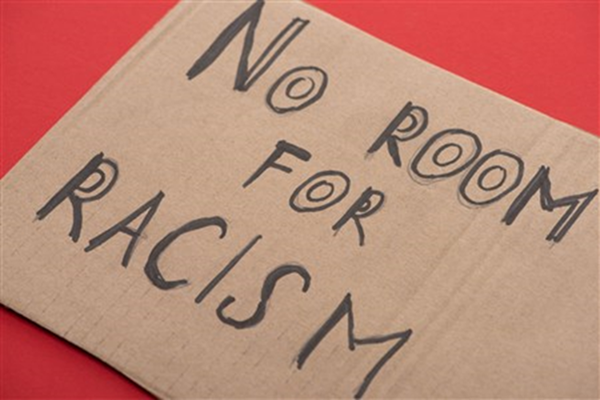Listen to this article:
Rev. Will Willimon boldly exposits that race is fiction, but racism is fact. Every day, we get glimpses into the reality of racism--from policing and surveillance practices to gaps in homeownership. While we acknowledge (and even celebrate) diversity, we also await the day when we will unanimously recognize the Divine Spirit and human worth that exists within each of us. To bring about that day, we need to talk about and confront the reality of racism. It's not too late for us… nor is it too early to talk about it with our children.
While racism is not a topic we're likely eager to address with children, it's a necessary topic — for they will learn of it through others or through hard experience. Use these helpful cues to address racism with young ones.
Be ready for it
While it might not be necessary to have a full script on how to deliver "the talk," it is a good idea to clarify your own thoughts about human diversity and racism and to prepare for what you want to express to children.
My family has tried to communicate some core beliefs to our child: Humans are diverse. Diversity is beautiful. Each one of us is a child of God — equally loved and valued in God's sight. Our job is to show God's love by showing others how loved and valuable they are. There are people who don't understand how God loves everyone.
Let them speak
Children often express strong realizations of fairness. Let them take the lead on questions pertaining to racism: "Is it right or fair to treat someone badly because they look different? What should you do if it happens to you? What should you do if you witness someone else doing it?"
Don't be afraid of the conversation. Provide opportunity for children to ask questions. Failing to talk about racism implicitly perpetuates it. So let them give voice to their questions regarding the issue: "Why would people be mean like that? Why do they think like that?"
Relate to their experience
In answering their questions, seek to relate answers to their world. Answers and perspectives will differ depending on family circumstances. Children of color will need affirming — they need reassurance of value and worth. Provide reminders that they are deserving of respect. White children will need reminders to not make assumptions about others.
Pointing to movies you watch together or books they've read can be helpful. There are many stories where a character appears and others make assumptions about the abilities or value of the character. But we know there's more to the story. We know what the character is truly capable of. In real life, people might make assumptions, too. But we know they're wrong. We know that we have abilities and value even if they don't.Show them they can help
Asking children to share their experiences without dismissal provides a sense of empowerment. Encourage them not to ignore unjust or unfair situations. What can they say in those situations? Are there others who they can tell about it?
Younger children will benefit from looking for things they have in common with other children, especially those who look different than them. The more similarities children see with others, the more comfortable they will be around each other. Look for points of commonality: even though Carly has darker skin, she really seems to enjoy playing tag, too.
Older children begin to see the value of diversity. Encourage them to point out the differences they appreciate in others. A Northwestern University study showed when older children were encouraged to look for and celebrate diversity, they were more able to detect and react to racist behaviors than children who had been taught a message of "color-blindness."
Be a role model
All this carries a serious implication: it is up to us to model the behaviors we hope to see in our children. Part of this means working our frustrations through to a resolution to encourage resiliency in our children. How can you constructively vent anger or frustration? What are proactive outlets leading to change?
Engage in the conversation, both with your children and with society. Recognizing the reality of racism and discussing ways for change will advance the cause. What step can you take today? (Check out our End Racism resources page for a few ideas.)
These tips will help initiate conversations. For further ways of engaging children in conversations regarding diversity and race, check out some of these resources:
Rev. Ryan Dunn is Minister of Online Engagement, Rethink Church. He writes from the offices of United Methodist Communications in Nashville, Tennessee.





